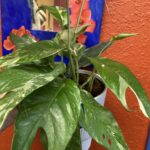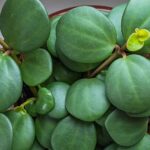Growing Salad in Your Indoor Garden
Guest post by Richard Clayton, owner of a small gardening shop and publisher of My Greenery Life, where he discusses everything you need to know about lawncare techniques.
Growing salad in your indoor garden ensures that you have fresh, tasty greens at your fingertips. Chances are you’ll be surprised at just how easy it is to grow lettuce and other salad fixings indoors. To do so, follow these easy steps.
Step 1. Choose Your Containers
Recycle just about any container for your indoor salad garden, or if you prefer a tidy look, buy containers in uniform shapes and sizes that match your interior. If you don’t have shelving for containers, install some, as this creates more growing space. Ensure that the containers have drainage holes.
Step 2. Select Soil for Your Salad Garden
Prepare your containers using potting soil specifically suited to growing greens. Such soil should be rich in nutrients, yet also well-draining. Avoid using outdoor soil from the garden on your indoor garden. Such soil tends to be full of weed seeds, bugs, bacteria, and it may not allow for adequate drainage and air circulation.
Step 3. Sow Your Salad Seeds
Plant in fresh soil each time you seed your indoor salad garden. You can buy various salad seeds, such as lettuce, spinach, Swiss chard, or Asian greens. Most of these flourish in cool weather, but some can grow well in hot weather. Indoors seeds should be planted about 1/8-inch deep. After sowing, water the soil surface with a spray bottle until it is saturated.
Lettuce seed germinates within 2 to 3 days indoors. The seeds germinate and sprout best when kept in a room of the house that is about 70 degrees Fahrenheit.
Step 4. Take Care of Your Indoor Salad Garden
For healthy growth of your salad greens, keep the temperature in the room cool. Water regularly, as salad greens are shallow-rooted and have large leaves. In general, water every couple of days. Also, provide sufficient light. Grow your indoor salad garden near the window where it can catch natural sunlight. If you have no outdoor light, place the salad greens under full-spectrum lighting for 12 to 14 hours a day. If the salad greens appear to be crowded, thin out the seedlings.
Step 5. Harvest Your Salad
When the salad greens grow to 2 inches, you can harvest fresh leaves. Pick the outer leaves for your salad and leave the rest to continue growing for 2 to 3 weeks and then harvest again. If you wish to cut the whole bunch of leaves, use a sharp knife or scissors and cut below the lowest foliage, removing old, unattractive outer leaves.
Salad greens taste bitter if you harvest them late. Pick them when they’re young and full of flavor. Butterhead lettuce is ready for harvest in 42 to 70 days after planting. Leaf lettuce needs 48 to 58 days. Romaine lettuce needs 50 to 70 days, and crisphead lettuce needs 60 to 120 days. Spinach matures in 35 to 50 days, while Swiss chard takes 50 to 60 days. To have a constant supply of salad greens, keep sowing seeds or planting salad greens every couple of weeks.
Indoor salad growing is a wise option to supply you and your family with fresh and tasty greens. The plants are also attractive, which means they will light up and decorate your home.





